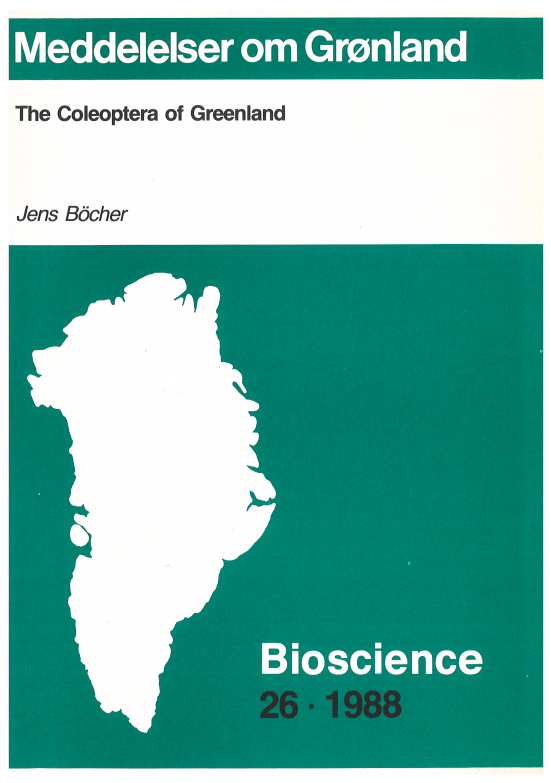The Coleoptera of Greenland
DOI:
https://doi.org/10.7146/mogbiosci.v26.142367Abstract
Since the appearance of the latest published list of Greenlandic insects (Henriksen 1939), 27 species of Coleoptera have been added, including 7 indigenous, 15 introduced, and 5 exclusively known as subfossils. Totally 71 species are treated.
A special section presents information on each species: taxonomical position, variation and dynamics, general distribution, Greenlandic distribution, habitat, and life cycle (mainly indirectly deduced from the collections).
A general section treats and discusses the same subjects on a comparative basis: the taxonomical composition of the beetle fauna, the zoogeographical position of the fauna, the distribution types within Greenland, the disposition of the species in relation to biotopes, and the variation in life cycles. Major conclusions concerning the indigenous fauna include: 1) the zoogeographical situation is peculiar, with equal importance of circumpolar and palaearctic species, and only one purely nearctic species; 2) the fauna has a pronounced southern character, with only one species having a southern limit in Greenland and thus deserving the designation "arctic"; 3) the majority of species are associated with benign microclimates and fairly lush vegetation, but a number of widespread species are highly eurytopic; 4) most species appear to overwinter as adults, four species are undoubtedly biennial with both larval and adult hibernation, and four seem to possess indefinite, opportunistic life cycles with extended larval life. Exclusively larval hibernation is suspected in only one species.
A final chapter reviews and discusses the origin of the Greenlandic Coleoptera. It is concluded that 1) a survival from the Tertiary in Greenland of any beetle species is highly improbable; 2) at most a few, hardy species might have existed in refugia from the Eem Interglacial during the last glaciation; 3) only two species, one purely nearctic, one "western" holarctic, undoubtedly have come to Greenland from North
America during the Holocene, and the same may be true for two more Holarctic species, absent from Europe; 4) the remainder of the indigenous species most likely are Lateglacial invaders from Europe; 5) the Norsemen were responsible for a number of introductions, of which only very few, partly synanthropic species, have survived to the present day.

Downloads
Published
Issue
Section
License
Coypyright by the authors and the Commision for Scientific Research in Greenland / Danish Polar Center/Museum Tusculanum Press as indicated in the individual volumes. No parts of the publications may be reproduced in any form without the written permission by the copyright owners.

